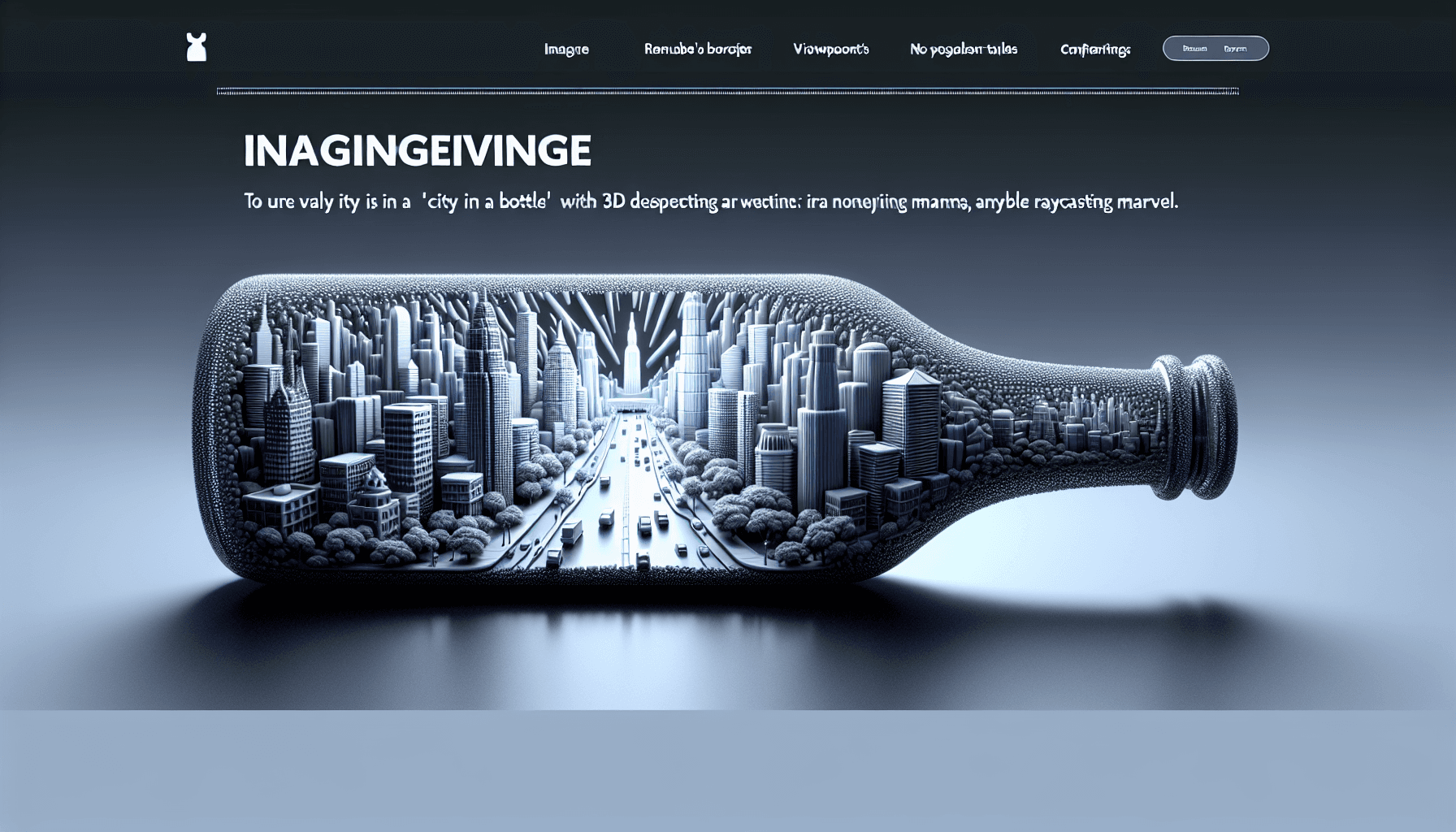Hello size coding fans. Today, I have something amazing to share: A tiny raycasting engine and city generator that fits in a standalone 256-byte HTML file. Here, I’ll share the secrets of how this magical program works.
 Overview
Overview
This incredible program combines various concepts into a compact, 256-byte block of code. It's akin to solving a puzzle with several main pieces: the HTML code, frame update loop, rendering system, raycasting engine, and the representation of the city itself. Despite the complexities involved, the code mostly employs basic algebra, making it accessible even for those new to programming.
Below is a breakdown of the key elements and how they contribute to the program's dazzling output.
 The Code Components
The Code Components
HTML Code
The HTML is minimalist, consisting of a canvas element with an `onclick` event to initiate the program. Here's a stripped-down version:
```html
<canvas style="width:99%" id="c" onclick="setInterval('for(…code…)', t=9)"></canvas>
The canvas ID is set to 'c' for easy JavaScript access, and the `onclick` event starts the update loop. The setInterval call initiates the frame updates every 9 milliseconds. This minor bug can cause multiple slow-running intervals if the canvas is clicked multiple times, but it’s non-critical for this tiny project.
JavaScript Code
The script encompasses a 199-byte payload that executes upon canvas click. This snippet is compatible with platforms like Dwitter and CapJS, making it easy to test and modify.
Key functions include:
- Clearing and setting up the canvas dimensions.
- Animating the scene by incrementing a time variable.
- Calculating camera vectors for horizontal and vertical components.
- Rendering the cityscape by iterating through loop variables to adjust pixel brightness based on raycasting principles.
Drawing each pixel based on calculated coordinates and brightness.

- An illustration showing the step-by-step code execution and resulting visual output.

 Breakdown of the Code
Breakdown of the Code
Camera Vector Calculation
- Horizontal component 'a' is derived by mod operation and normalized between -1 and 1.
- Vertical component 'b' uses similar calculations, adjusted for vertical perspective slant and offset.
Scene Animation
- Initial positions (X, Y, Z) and a fog blending variable 'd' are set.
- The scene shifts rightward over time using the time variable 't'.
Raycasting System
- The inner loop handles ray advancement and collision checks.
- Building heights and details are determined dynamically to shape the cityscape.
Shadow and Texture Creation
- The dual-purpose loop handles initial raycasting and subsequent shadow checks by bouncing rays toward a light source.
- Pixel textures are applied using bitwise operations and distance fading.
 Visualization and Realism
Visualization and Realism
Each pixel is drawn by combining several calculated values for grayscale rendering. Shadows are dynamically created to simulate ambient occlusion, noteworthy given the minuscule code size.
 Achievement and Expansion
Achievement and Expansion
Even though it didn't rank high due to category errors at the Revision 2022 demo party, "City In A Bottle" stands as a remarkable example of ultra-compact coding. Further expansions include:
- HD version on Shadertoy
- Interactive tool by Daniel Darabos on Observable
 Conclusion
Conclusion
This tiny 256-byte raycasting engine and city generator showcase immense potential within minimal code constraints. Keep experimenting and pushing technical boundaries, whether you're remixing on Dwitter or exploring new paradigms.

 Continued Learning
Continued Learning
If you’re interested:
- Remix the code on Dwitter.
- Explore further on CapJS.
- Check out the real-time interactive tool on Observable.
 Remember these 3 key ideas for your startup:
Remember these 3 key ideas for your startup:
- Efficiency in Code: Achieving impressive results with minimal code helps save resources and accelerates development cycles. This demonstration proves that less can indeed be more.
- Innovative Thinking: Embracing unconventional coding challenges can lead to creative solutions and differentiate your products. Consider experimenting with ultra-compact coding to stand out in the market.
- Collaboration and Expansion: Leverage community platforms like Shadertoy and Observable for collaborative growth. Enhancing these initial innovations can lead to further breakthroughs.
Edworking is the best and smartest decision for SMEs and startups to be more productive. Edworking is a FREE superapp of productivity that includes all you need for work powered by AI in the same superapp, connecting Task Management, Docs, Chat, Videocall, and File Management. Save money today by not paying for Slack, Trello, Dropbox, Zoom, and Notion.
Let's continue to innovate with small yet impactful coding marvels! Keep coding, exploring, and pushing the boundaries of what can be achieved with concise codebases. Follow Frank Force on Twitter to stay updated on more coding magic.






